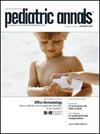儿童特应性皮炎
IF 1.1
4区 医学
Q3 PEDIATRICS
引用次数: 1
摘要
特应性皮炎(AD)在儿科人群中极为常见,大多数患有 AD 的儿童都会首先到初级保健医生(PCP)处就诊。初级保健医生可以根据特应性皮炎的临床特征(包括瘙痒、慢性复发性病程和特征性糜烂)来识别特应性皮炎。干性皮肤护理是 AD 治疗的基础,通常是每天进行短时间的沐浴,然后在所有皮肤上涂抹润肤剂。大多数 AD 患儿还需要外用药物,如外用皮质类固醇激素和/或外用非类固醇疗法。对于病情较重的儿童,可能需要使用全身性药物,包括几种新型疗法。在管理 AD 时,临床医生必须监测药物的副作用以及 AD 本身的并发症,其中最常见的是继发感染。了解 AD 的发病机制、治疗方法和并发症对初级保健医生来说至关重要,因为未经治疗(或治疗不足)的 AD 会严重影响患儿及其护理人员的生活质量。[2024; 53(4):e121-e128.].本文章由计算机程序翻译,如有差异,请以英文原文为准。
Atopic Dermatitis in Children.
Atopic dermatitis (AD) is extremely common in the pediatric population, and most children with AD will first present to their primary care provider (PCP). The PCP can recognize AD by its clinical features, including itch, a chronic relapsing course, and the characteristic eruption. The cornerstone of AD therapy is dry skin care, typically a short daily bath/shower followed by an emollient applied to all skin. Most children with AD will also require topical medications, such as topical corticosteroids and/or topical nonsteroidal therapies. For children with more severe disease, systemic agents, including several novel therapies, may be required. In managing AD, the clinician must monitor for side effects of medications as well as complications of the AD itself, the most common of which is secondary infection. An understanding of the pathogenesis, treatments, and complications of AD is essential for the PCP, as untreated (or undertreated) AD has a significant impact on the quality of life of affected children and their caregivers. [Pediatr Ann. 2024;53(4):e121-e128.].
求助全文
通过发布文献求助,成功后即可免费获取论文全文。
去求助
来源期刊

Pediatric Annals
医学-小儿科
CiteScore
1.80
自引率
0.00%
发文量
104
审稿时长
2 months
期刊介绍:
Published for more than 40 years, Pediatric Annals is an online-only, monthly medical review journal dedicated to providing pediatricians and other clinicians with the latest practical information on the diagnosis and treatment of pediatric diseases and disorders. Begin to explore the Journal and all of its great benefits such as:
-Single-topic summary reviews of important trends in pediatric medicine
-Access to current articles, as well as several years of archived content
-Columns including Healthy Baby/Healthy Child and Case Challenges
 求助内容:
求助内容: 应助结果提醒方式:
应助结果提醒方式:


